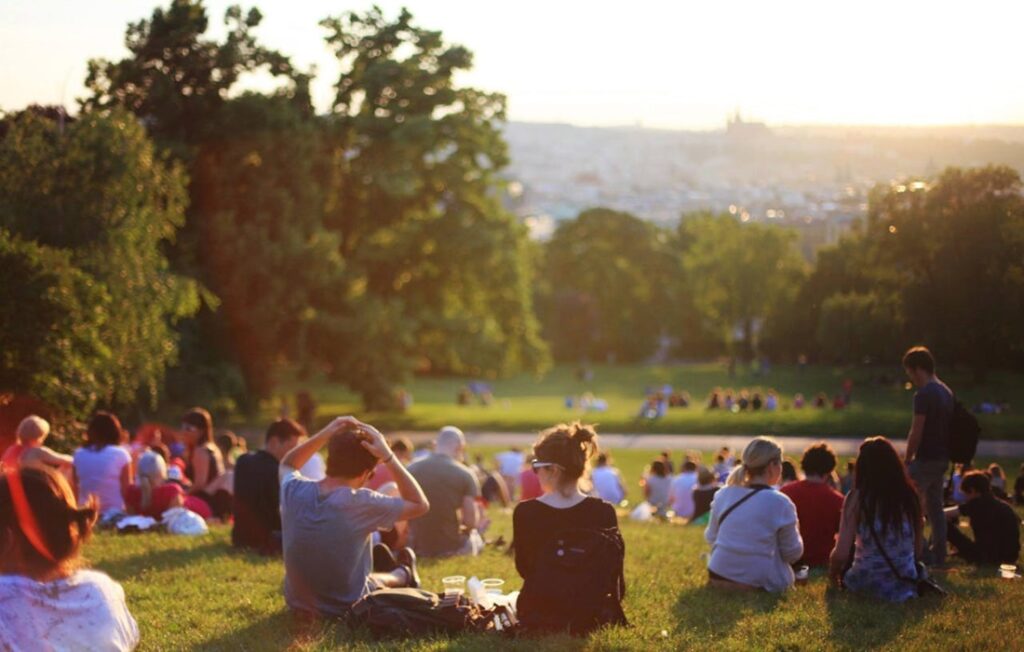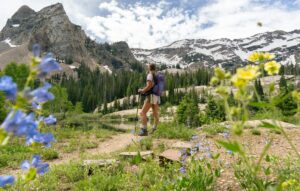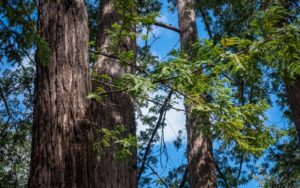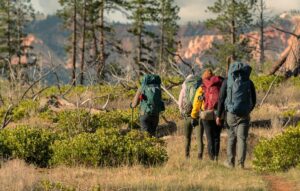To really understand the origin of public parks in America, we’re going to have to look back to Victorian era England (1837 – 1901) and what was considered at the time to be a moral duty of the wealthy to educate and positively influence the working class. By spending time in what was considered a “neutral” public place—one filled with greenery, which brought the “civility” of the country into an urban setting that was overcrowded and primarily poor—the wealthy elite could show the “unruly” working class how to behave in a civilized society.
Public parks developed as locations for physical and moral health. Natural spaces were considered hygienic (concern about germs and disease, particularly in highly populated areas, was becoming much more commonplace) and enabled men and women alike to take part in recreation and socialization.
Prior to the creation of the world’s first public park in Manchester, England, gardens and parks were primarily located on private estates, accessible only to the elite. However, it was quickly realized that with growing urbanization, green spaces were disappearing in cities. Suddenly, natural open space was a commodity.
Parks in America
Two hundred years before the Victorians thought strolling around public green spaces to be an essential part of the social scene, America had created its earliest model of what eventually would become known as a public park. The Boston Common in 1634 had a wide range of uses, from communal livestock grazing to public punishments like stocks and whipping posts, to public oratory and the delivery of news. During the Revolutionary War, this land was commandeered by the British for soldier training. Civil War recruitment and anti-slavery meetings took place throughout the 1860s.
This communal land had many purposes which largely benefited the whole community (minus the Redcoats), from justice to communication to agriculture. And while the use of common lands for shared benefit was certainly not novel to the Boston Common or the U.S.—communities around the world have been sharing land in this way for thousands of years—this is the first example of public land for the public good in America, the country.
The Great Outdoors for All?
In 1852, construction workers broke ground on America’s largest landscaped park project to date. The concept and design of Central Park in New York City was inspired by the large public parks of Europe. The city used the power of eminent domain (claiming private property for the purpose of making it public, even if the landowner doesn’t consent) to gather 700 acres in central Manhattan. More land was procured in 1863, bringing the park to its current 843 acres.
While the development of the Central Park was touted as being for the common good of the city’s citizens, 1,600 poor residents were displaced, including the entirety of Seneca Village, a successful Black neighborhood, in the process.
Park designer Frederick Law Olmsted aimed to create a peaceful retreat for New Yorkers at all class levels, to provide the experience of a country retreat to those in the working class who could not be able to afford a trip out of the city to green spaces.
“It is one great purpose of the Park to supply to the hundreds of thousands of tired workers, who have no opportunity to spend their summers in the country, a specimen of God’s handiwork that shall be to them, inexpensively, what a month or two in the White Mountains or the Adirondacks is, at great cost, to those in easier circumstances.”
Frederick Law Olmsted, April 28, 1858
And while this was a very progressive view for the time, it certainly highlights the glaring lack of accessibility to nature that started more than 160 years ago.
A Changing Landscape for Green Spaces
Over time, the purpose of public parks shifted. From being a secluded, pastoral landscape for the elite (1850s) to becoming a critical space for education, sustainability, and recreation in communities throughout the U.S. and around the world (today). But that change didn’t happen quickly, and accessibility wasn’t immediate for everyone; especially not for BIPOC, disabled, and working-class communities.
1850 - 1900
Public parks were located near a big city, often at the edge of town. The landscaping of the park followed a pastoral style intended to simulate nature and the countryside in an urban area. The working class was largely unable to use these parks due to their physical distance from city centers, where many of the working class lived.
1901 - 1939
The focus of public parks? Social change. Racism and classism spurred on by misconceptions of immigration led to the idea that these spaces could be used for social reform. Rather than being located at the edge of a city, public parks are smaller and more frequently located throughout neighborhoods with field houses and playgrounds to encourage healthy, safe activity—primarily for children.
1931 - 1965
Parks for the purpose of recreation become the norm. Parks now have facilities to help facilitate these activities. Major stadiums begin to be referred to as parks (why many of today’s sporting event spaces are called “Park”), and public parks become a recognized government service at municipal, state, and federal levels.
1965 - Present
Open spaces are far more common and are well-known for their recreational value. These are now frequent locations for sustainability and environmental education and are critical community resources.
Despite this timeline in which public parks have largely become more accessible overall, there are certainly still issues of environmental injustice and inaccessibility when it comes to where these parks are located, the quality of green spaces, and how easy the parks are to navigate for people at all levels of mobility. And we haven’t touched on the glaring issue of the historical theft of Tribal lands to form our National Park System. So, yeah, there are still quite a few problems that need to be addressed as we move to protect more and more of our green spaces, but this time through the lens of justice and equity.
How to Help Make Outdoor Green Space More Accessible Where You Live
Our parks might be largely managed by the government, but there are ways you can get involved to impact how they’re managed and make them more accessible for every member of your community. You can start by identifying what parks are near you—don’t forget to look at the municipal, county, and state levels; you might be surprised at how many there are. These tools can help:
- National Park Services – Find a Park
Once you’ve found a park or two to support, do some research to see what nonprofit organizations might already exist to help support them. Many parks have a “Friends of” nonprofit or community program that helps steer initiatives such as beautifying campaigns (litter pickup), community events, raising funds for new amenities, and more. Can’t find one? Consider starting one yourself!
Become a park advocate. All development that takes place within a city requires city permission (permits, zoning, etc.) If you think a piece of land would be put to better use as a local park than yet another strip mall, voice your opinion—tell your city leaders and get others on board. Is the park inaccessible to some members of the community? Attend local government meetings to demand ramps, railings, and other mobility tools to ensure everyone can use the space. Vote, protest, lobby. These are all tools we have as citizens, and ones we can use to voice how we want our communities to be managed.
Nature is for everyone. And while the history of our public parks might not always have reflected this, our communities are better when everyone has equal access to the great outdoors.




